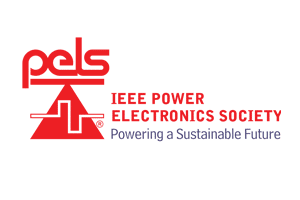EPE'23 ECCE Europe: Keynotes

KEYNOTE 1: Tuesday, 5 September 2023 – Time: 09:30-10:00 (Plenary Room – Hal Ost)
Power-to-X: Optimizing X for a Sustainable Society
Adrian Timbus
Head of Portfolio and Market Strategy at Hitachi Energy
Abstract:
Power to X is discussed recently in many commercial and technical debates about our sustainable energy future. X can take different forms, being thermal, chemical, electrical, and even magnetic energy, among others. In this keynote, we will understand needs for use of various forms of X, analyzing the financial viability and technical feasibility of different concepts. We will then put it all in the perspective of the energy transition and our ambition as a society to become carbon neutral in the next couple of decades.

KEYNOTE 2: Tuesday, 5 September 2023 – Time: 14:40 – 15:10 (Plenary Room – Hal Ost)
Energy Islands – the key to harvest huge amounts of wind power
Hanne Storm Edlefsen
Vice President of the Energy Islands, Energinet
Abstract:
The Energy Islands will change the way we talk about harvesting wind energy. They will allow us to go much further out at sea and harvest far more power than previously known. However, the Energy Islands are a complicated matter, especially on the technological front. We have never quite done something like this in this type of scale, which means we need innovation in order to succeed. There are many questions to be answered. I will try to give my best estimate on what type of technological challenges we need to overcome to enable the success of the Energy Islands, but also what the future Energy Islands may look like.

KEYNOTE 3: Wednesday, 6 September 2023 – Time: 08:30 – 09:00 (Plenary Room – Hal Ost)
LMNO: high-voltage spinel as Li-ion battery cathode. Status and battery properties
Søren Dahl
Topsoe
Abstract:
The positive electrode active material for Li-ion batteries LNMO (LiNi0.5Mn1.5O4) has numerous advantages. The high working potential and high energy density pave the way to either longer operating ranges or a smaller battery package, whilst the three-dimensional spinel structure makes it possible to achieve high discharge rates and fast battery charging. The absence of the critical metal cobalt and the relatively low nickel content make this a cost-effective alternative to today’s mainstream lithium-ion battery chemistries. The talk will present the properties and challenges of LNMO batteries. Furthermore, the technical status and market perspective will be given.

KEYNOTE 4: Wednesday, 6 September 2023 – Time: 09:00 – 09:30 (Plenary Room – Hal Ost)
Power Electronics in Electric Vehicles: It’s not only about cost
Kunal Goray
AVL-Software and Functions GmbH
Abstract:
There are a number of power electronics components within an electrical vehicle performing various applications such as main traction inverter, DCDC converter, On board charger etc. Over time the automotive industry has an expectation to reduce the costs for these components, but this is a unidimensional thinking and needs to be challenged. There can be much more value generated when one starts to utilize the power electronics for providing additional functions or when one starts to integrate multiple functions into a single working unit. The transition to wide band gap semiconductors also is an enabler here that can provide highly efficient solutions across multiple applications for the electric vehicle.

KEYNOTE 5: Thursday, 7 September 2023 – Time: 08:30 – 09:00 (Plenary Room – Hal Ost)
Advanced SiC Power Modules for E-Mobility
Dr. Fabio Carastro
Semikron Danfoss
Abstract:
Next generation SiC-MOSFET power modules for electric vehicle applications are targeting increased power density and efficiency to reduce the overall drivetrain and charger cost. High currents, fast switching transients as well as high power density packages demand: best use of semiconductor area by advanced bonding, cooling technologies and layout optimization.
This presentation will give an overview of state-of-the-art of Semikron Danfoss power modules packaging, latest development in current sensing integration and some examples of high power density converter design with focus on SiC-MOSFET for E-Mobility applications.

KEYNOTE 6: Thursday, 7 September 2023 – Time: 09:00 – 09:30 (Plenary Room – Hal Ost)
Net-Zero-CO2 by 2050 is NOT Enough!
Johann W. Kolar
Power Electronic Systems Laboratory, ETH Zurich
Abstract:
The transformation of the fossil-fuel-based energy system into a new Net-Zero-CO2 all-electric system will rely on a massive extension of the electric grid infrastructure and a massive installation of power electronic converters and energy storage systems. However, assuming a typ. 20 years lifetime, converter systems installed today will need to be replaced already by 2050, i.e., at the commonly accepted date for reaching the Net-Zero-CO2 target. Given the scale of the future Internet of Energy, the maintenance or replacement effort at some point will potentially run into depletion of scarce raw materials and large volumes of waste and associated environmental problems. This clearly indicates that “Net-Zero-CO2 by 2050 is NOT Enough” and underlines the urgency of a transition from a Linear Economy to a Circular Economy, which ensures that the Net-Zero-CO2 target is reached on a sustainable basis, i.e., with minimized environmental impact in all aspects. The talk will first introduce metrics for measuring the environmental impact of power electronic converters and explain the concepts of Life Cycle Analysis of systems and of a Circular Economy in contrast to the Linear Economy dominating today. Next, the utilization of degrees of freedom of the design of power electronic converters for maximizing repairability, reusability, and recyclability while minimizing the use of critical materials, toxic substances, and ultimately waste will be shown at the example of EV chargers and PV inverters employing different power semiconductor technologies and circuit topologies. Finally, a roadmap for the introduction of environmental awareness into the power electronics design process will be proposed in order to ensure that power electronics as the main enabler of a Net-Zero-CO2 society reaches full compatibility with a Circular Economy at the earliest point in time possible.





